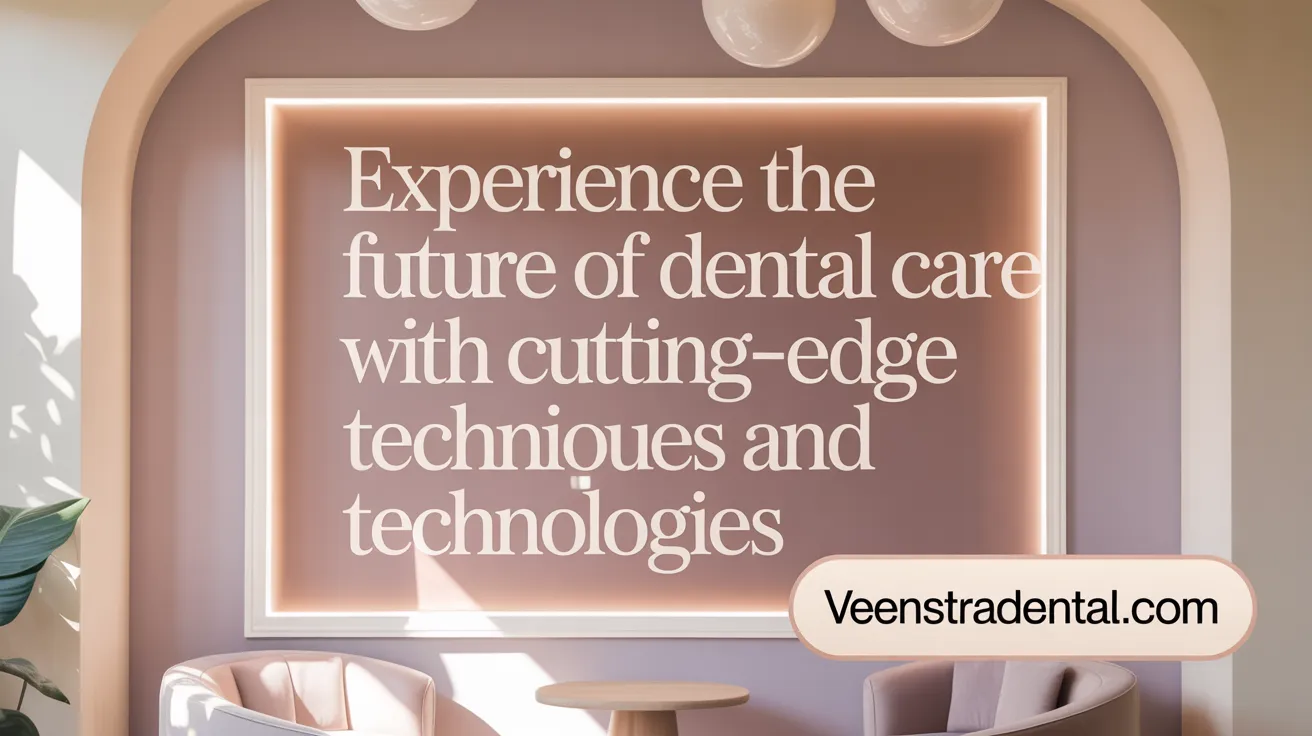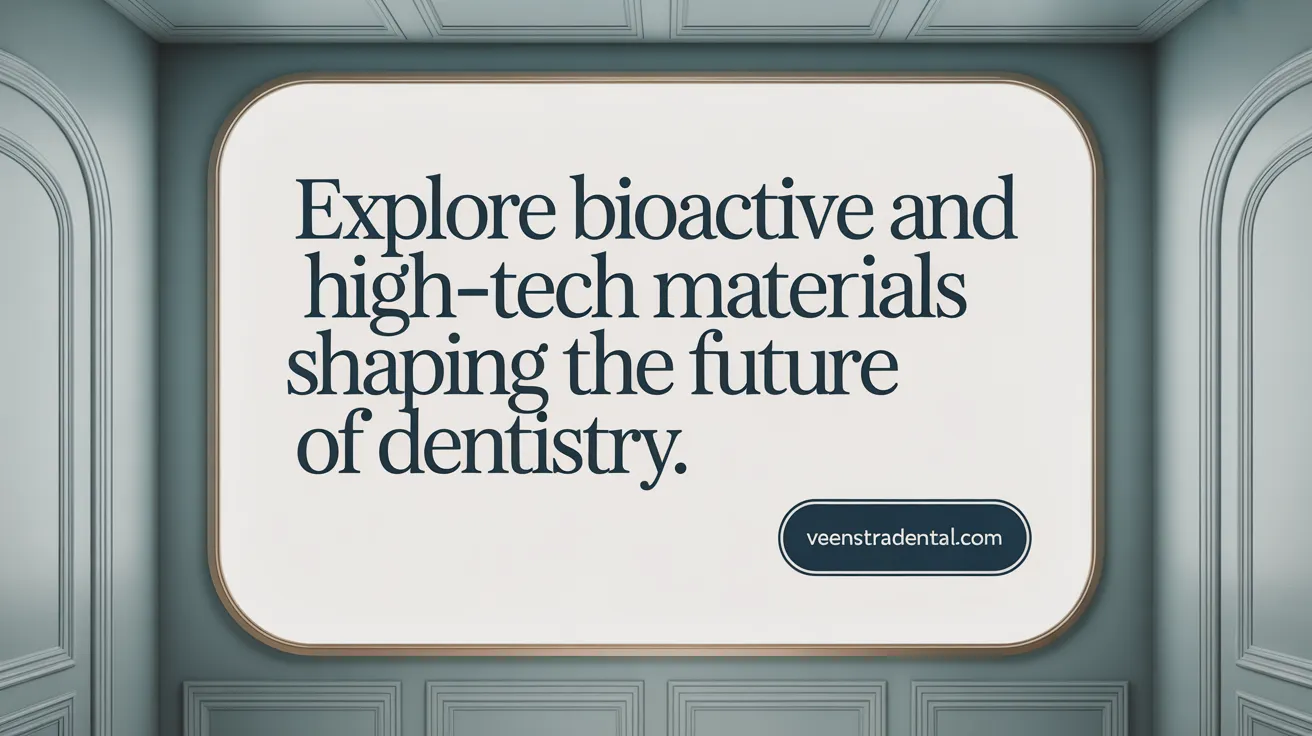Understanding Modern Smile Restoration
Restoring smiles today goes far beyond traditional dental repairs. With rapid technological advances and innovative materials, restorative dentistry offers patients a blend of function, aesthetics, and comfort that was unimaginable just a decade ago. This article explores the latest restorative options, breakthrough techniques, and future trends revolutionizing smile restoration, giving patients renewed confidence and improved oral health.
Comprehensive Dental Restoration Options to Enhance Your Smile

What are the different types of restorative dentistry procedures?
Restorative dentistry encompasses numerous procedures aimed at repairing, replacing, or enhancing teeth. Common options include dental fillings, crowns, bridges, implants, veneers, and dentures. Crowns reinforce weakened teeth or hide discoloration, providing strength and aesthetic appeal. Veneers are ultra-thin shells that cover the front surface of teeth, often used to correct chips, stains, or minor misalignments.
Dental implants are titanium posts surgically inserted into the jawbone, serving as sturdy anchors for crowns or bridges. These implants are notable for their durability and ability to function like natural teeth. Dentures and partial dentures replace multiple missing teeth, restoring function and appearance.
In recent advancements, inlays and onlays offer conservative restorations for damaged teeth, preserving more natural tooth structure. Additionally, minimally invasive procedures like dental bonding can repair chips, close gaps, or reshape teeth effectively.
What function and aesthetic benefits do common restorations offer?
Restorative treatments are designed to improve both functionality and appearance. Crowns and implants restore the ability to chew and speak normally, while also preventing further damage by strengthening compromised teeth. Veneers and whitening treatments enhance the visual appeal, creating a more attractive smile.
By restoring symmetry and filling gaps, these procedures help maintain proper bite alignment and protect against jaw pain or misalignment issues. Additionally, modern techniques allow for natural-looking results, matching the color, shape, and size of surrounding teeth.
What are the latest options in dental implants and prosthetic approaches?
Dental implant technology has seen significant innovation. Titanium implants are widely used, but alternatives like zirconia implants offer a tooth-colored, resistant-to-corrosion option, suitable for those with allergies.
Advancements include immediate load implants, which allow for placement and functional restoration in a single visit, and minimally invasive techniques such as flapless surgery and computer-guided placement, reducing trauma and recovery time. 3D imaging, like CBCT scans, enable precise planning, ensuring optimal placement.
All-on-4 implants support entire arches of teeth with fewer implants, streamlining procedures and enhancing stability. Digital smile design uses 3D modeling to visualize outcomes beforehand, boosting confidence.
Are there less invasive options like bonding and veneers?
Yes. Dental bonding uses tooth-colored resin to repair chips, fill gaps, or improve shape. It’s a quick, minimally invasive procedure that requires little to no tooth removal.
Porcelain veneers are thin shells bonded to the front of teeth, offering a natural appearance with minimal preparation. They are ideal for correcting discolorations, minor misalignments, or chips.
Inlays and onlays provide more extensive restorations than bonding but are still less invasive than full crowns, preserving more natural tissue.
How do cosmetic treatments complement restorative procedures?
Cosmetic treatments such as teeth whitening, gum contouring, and reshaping work alongside restorations to create a balanced, harmonious smile. These procedures enhance aesthetic appeal, boosting confidence.
Integrating restorative and cosmetic techniques ensures functional recovery while achieving desired visual results, consistent with individual preferences.
| Restoration Type | Main Purpose | Technological Features | Typical Use Cases |
|---|---|---|---|
| Fillings | Repair cavities | Tooth-colored composites | Minor decay, small damages |
| Crowns | Protect and strengthen | Custom-made, durable | Weakened or damaged teeth |
| Veneers | Improve appearance | Thin, matched to natural teeth | Chips, stains, misalignments |
| Implants | Replacement for missing teeth | Titanium or zirconia, osseointegration | Single or multiple missing teeth |
| Dentures | Full or partial tooth replacement | Removable, customizable | Complete or partial tooth loss |
| Bridges | Bridge gaps | Supports crowns on adjacent teeth | Missing teeth without implants |
| Inlays/Onlays | Repair larger damages | Conservative, preserve natural tissue | Larger decay or cracks |
Understanding these options allows you to make informed choices tailored to your dental health and aesthetic goals.
Emerging and Innovative Techniques in Restorative Dentistry
 Recent advancements in restorative dentistry are transforming how dental issues are treated and how restorations are created. Digital technologies like 3D printing and CAD/CAM systems are at the forefront, allowing clinicians to design and produce customized dental prosthetics rapidly. These tools enable same-day crowns, veneers, and dentures with exceptional accuracy and aesthetic appeal.
Recent advancements in restorative dentistry are transforming how dental issues are treated and how restorations are created. Digital technologies like 3D printing and CAD/CAM systems are at the forefront, allowing clinicians to design and produce customized dental prosthetics rapidly. These tools enable same-day crowns, veneers, and dentures with exceptional accuracy and aesthetic appeal.
Minimally invasive procedures are increasingly popular, with laser dentistry and air abrasion methods reducing discomfort, decreasing healing times, and preserving more of the natural tooth structure. These innovations make treatments more comfortable and efficient for patients.
Smart materials designed for regenerative purposes are also emerging. Bioactive fillings and stress-responsive crowns adapt to changing oral conditions, actively fighting decay and supporting tissue healing. These materials can prevent future dental problems and extend the lifespan of restorations.
The future of dental restoration involves regenerative techniques such as stem cell therapy, platelet-rich plasma, and bioengineered enamel. These approaches aim to naturally repair and regrow damaged tissues or entire teeth, potentially replacing artificial restorations altogether.
Furthermore, artificial intelligence (AI) and robotic-assisted procedures are enhancing diagnosis, treatment planning, and surgical precision. AI analyzes vast amounts of data from previous cases to predict risks and optimize outcomes, while robotic tools ensure high accuracy during complex procedures.
Overall, the integration of digital and biological innovations in restorative dentistry promises more durable, less invasive, and biologically compatible solutions, greatly improving patient care and long-term oral health.
Materials Shaping the Future of Restorative Dentistry
 Modern restorative dentistry heavily relies on innovative materials that enhance both function and appearance of dental restorations. The most popular materials include zirconia, lithium disilicate, porcelain, and composite resins.
Modern restorative dentistry heavily relies on innovative materials that enhance both function and appearance of dental restorations. The most popular materials include zirconia, lithium disilicate, porcelain, and composite resins.
Zirconia and lithium disilicate ceramics are highly favored for their strength, durability, and natural appearance. Zirconia, a type of advanced ceramic, offers excellent toughness, making it suitable for crowns and bridges that need to withstand biting forces. Lithium disilicate, known as e.max, provides exceptional aesthetics due to its translucency and color-matching capabilities, ideal for visible front teeth.
Composite resins are versatile and widely used because they bond directly to tooth structure. They are tooth-colored, quick to apply, and cost-effective, but may need replacement every 5-7 years. Porcelain and glass-ceramics, on the other hand, are highly resistant to staining while maintaining a realistic look.
Recent developments include hybrid ceramics and zirconia-reinforced ceramics, which combine strength with aesthetic appeal. These materials, along with advances in digital fabrication techniques, have led to longer-lasting restorations with better biocompatibility.
The evolving field also emphasizes materials that promote healing and tissue integration. Biocompatible and bioactive materials stimulate remineralization, protect against bacterial invasion, and reduce sensitivity. Ceramic implants are increasingly competing with traditional titanium, especially for patients with allergies or sensitivities.
In summary, the selection of materials in restorative dentistry now balances durability, aesthetics, and patient compatibility, ensuring long-term success and natural-looking results.
Advancements in Dental Implant Technologies and Techniques
How have implant technologies evolved to improve smile restoration outcomes?
The journey of dental implant technology has seen remarkable progress from basic materials to sophisticated systems designed for better outcomes. Initially, primitive solutions like seashells and carved stones were used to address missing teeth. Today, materials such as titanium and zirconia dominate the industry due to their exceptional biocompatibility and natural appearance.
A pivotal breakthrough was the discovery of osseointegration by Swedish researcher Brånemark in the 1960s. This process, where the bone fuses securely with the implant surface, provided a stable foundation for long-lasting restorations. This insight revolutionized implant dentistry, enabling implants to function like natural tooth roots.
Modern innovations further enhance success rates and aesthetic results. The use of advanced 3D imaging and computer-aided design allows precise planning of implant placement, reducing complications and improving fit. Digital smile design helps tailor solutions to individual patients, ensuring natural-looking results.
Surface treatments such as acid etching and sandblasting promote better integration between the implant and the bone, extending durability. Regenerative techniques and bioactive coatings stimulate tissue healing and stability. Emerging technologies include smart implants embedded with sensors, nanotechnology to improve surface properties, and AI-driven software for surgical planning.
The development of All-on-4 implants exemplifies efficiency; by placing four strategically positioned implants, an entire arch of teeth can be supported, reducing surgical time and recovery.
Immediate load technology allows restorations to be placed shortly after implant insertion, minimizing waiting periods and providing patients with quicker functional teeth.
The integration of AI and 3D imaging has vastly improved predictability and aesthetics. These tools enable specialists to plan and execute procedures with heightened accuracy, leading to better patient satisfaction and longer-lasting results.
Overall, modern implant technology continually advances toward more comfortable, resilient, and aesthetically pleasing solutions—making smile restoration more accessible and successful than ever before.
Future Directions and Trends in Restorative Dentistry
Emerging trends in restorative dentistry are rapidly transforming how dental professionals approach treatment planning and procedures. Advances in digital technologies, such as 3D printing and digital impressions, enable the creation of highly customized restorations like crowns, bridges, and dentures with greater precision. These innovations allow for more minimally invasive procedures, reducing patient discomfort and speeding up recovery.
Artificial intelligence (AI) and machine learning are increasingly being integrated into dental practices. They assist in early diagnosis, risk assessment, and treatment optimization by analyzing vast amounts of clinical data. AI-driven robotic systems are also beginning to perform complex procedures with high accuracy, making treatments safer and more efficient.
Personalization is becoming a cornerstone of modern restorative dentistry. 3D printing and genetic profiling enable the development of individualized restorations and regenerative solutions. Bioactive materials, which promote tissue healing and regeneration, are on the rise. These materials assist in natural tooth regrowth and improve long-term outcomes.
Minimally invasive, chemical-free treatments are gaining popularity. Laser dentistry, digital Smile Design, and other advanced techniques improve aesthetic results while enhancing patient comfort.
Looking ahead, the integration of AI with manufacturing processes, increased use of bioresorbable and regenerative materials, and expanded telehealth services will make restorative care more accessible and effective. These developments promise a future where restorations are not only functional and durable but also naturally mimicked and tissue-friendly.
| Technology Area | Current Applications | Future Potential |
|---|---|---|
| 3D Printing | Custom crowns, bridges, dentures | Fully bioresorbable, personalized implants |
| Artificial Intelligence | Diagnostics, treatment planning | Fully automated procedures, predictive analytics |
| Regenerative Materials | Bioactive implants, tissue repair agents | Accelerated healing, integration with genetic data |
| Minimally Invasive Techniques | Laser dentistry, digital Smile Design | Complete non-invasive, painless treatments |
| Telehealth | Remote consultations, follow-up care | Broader access, real-time remote diagnostics |
Staying ahead in restorative dentistry involves embracing these technological shifts, ensuring better patient outcomes and more predictable, natural-looking results.
The Bright Future of Smile Restoration
Innovative techniques and materials continue to propel restorative dentistry into an era that blends science, technology, and artistry to restore both appearance and oral health effectively. The integration of digital workflows, bioactive materials, and AI-enhanced planning ensures personalized, durable, and comfortable solutions for patients. As research in regenerative dentistry progresses, the possibility of natural tooth regrowth may transform the field entirely. For anyone seeking to restore their smile, the future promises faster, less invasive, and more natural outcomes that enhance confidence and quality of life.
References
- Innovative Approaches to Smile Restoration in 2025
- Restore Your Smile With These Innovative ...
- Modern Techniques for Dental Restoration
- Implant Technology Innovations: Future of Smile Restoration
- Preventing Dental Issues through Restorative Dentistry
- Cutting-Edge Innovations in Restorative Dentistry
- Modern Restorative Dental Techniques: Your Guide to a ...
